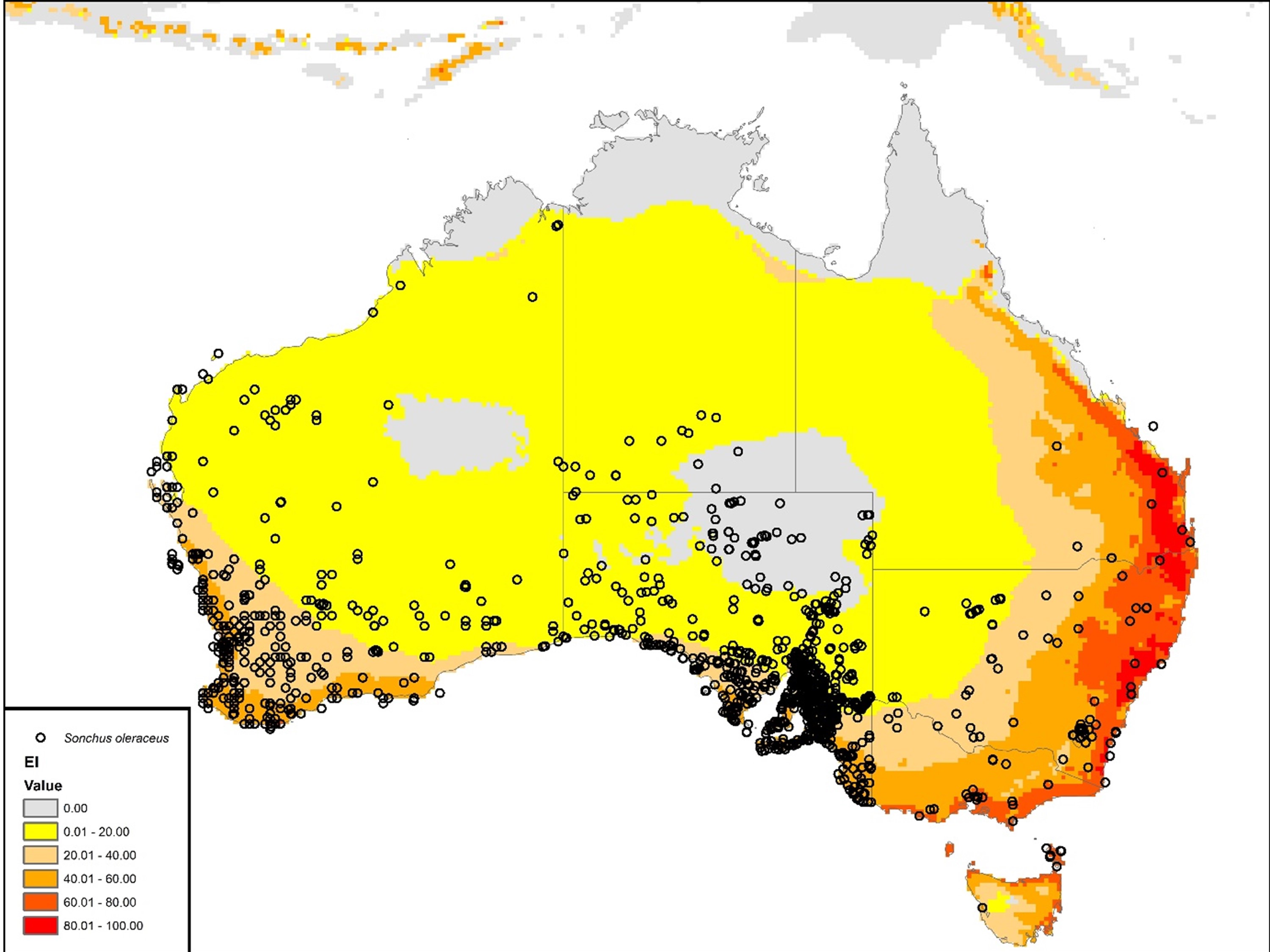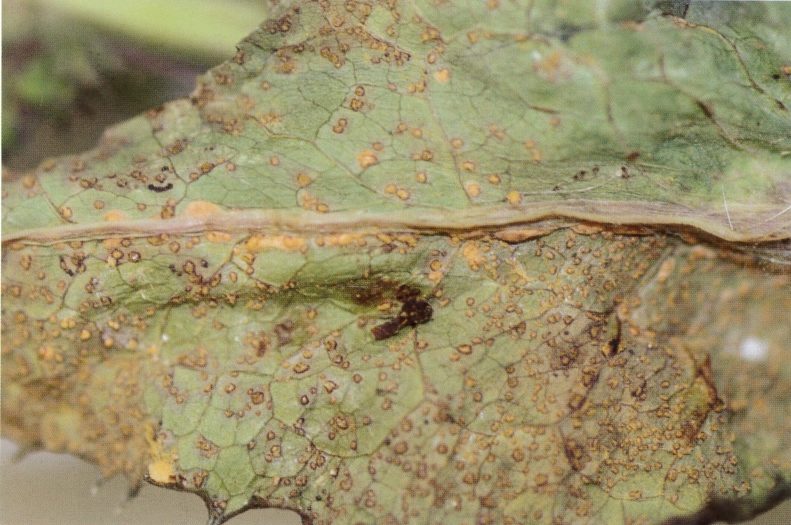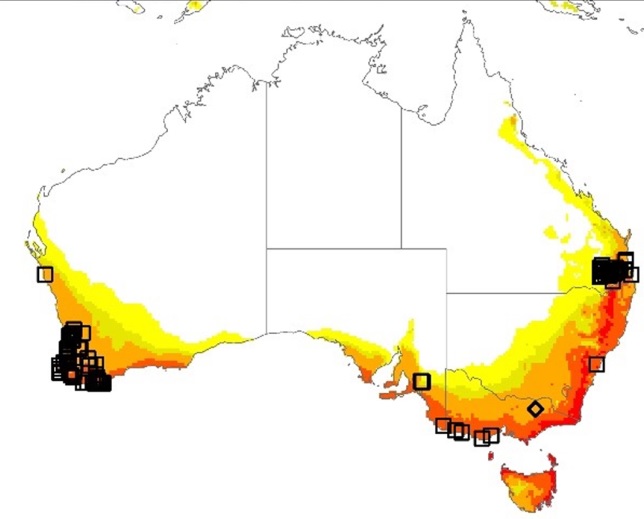Our research
Recent research
The research was focusing on (a) identifying which of the many natural enemies that attack common sowthistle in the native range are the most appropriate candidate biological control agents for this weed, (b) undertaking comprehensive testing to demonstrate that they do not pose a threat to non-target plants and (c) if approved by the authorities, releasing the agents across the range of the weed in Australia.
It was undertaken as part of two projects led by AgriFutures Australia and primarily supported by funding from the Australian Government Department of Agriculture, Water and the Environment as part of its Rural R&D for Profit programme rounds 2 and 4:
- Biocontrol solutions for sustainable management of weed impacts to agricultural profitability (2016-2020)
- Underpinning agricultural productivity and biosecurity by weed biological control (2019-2022)
The overlapping projects were designed to complement each other and included the following main activities:
- Define management goals
- what stakeholders would like biological control to achieve.
- Undertake literature searches
- to gather information on the target weed, its distribution and its known natural enemies.
- Nominate common sowthistle ne as a target for biological control
- In Australia, a weed must be endorsed as a target for biological control by the national Environment and Invasives Committee before permission to release a biological control agent is sought.
- Identify appropriate region(s) to source candidate biological control agents
- Bioclimatic modelling; the climate of the native and invaded ranges of the target weed are characterised and compared using a distribution modelling tool. By comparing meteorological data from the different regions, specific area(s) of the native range can be identified where potentially best climatically suited candidate agents will be found.
- Genetic study; molecular characterisation of the target weed is used to determine the weed genetic structure which helps identify the area(s) of the native range where the weed originates from.
- Conduct native range surveys to identify candidate agents
- Some level of quantification of the damage caused by the natural enemies of interest is performed while surveying in order to assist selection of the most promising agents for further investigations.
- Test the host-specificity of promising candidate agents
- Host-specificity testing is necessary to determine the potential range of plants (hosts) which will be attacked by the candidate agent in Australia. Testing methods are always tailored to the particular agent and seek to understand the potential range of plants that would be accepted by the agent after its release in the field. Testing follows a centrifugal phylogenetic approach that concentrates on closely related plant species to the target weed.
- Prepare and submit applications for release of suitable candidate agent(s) to the relevant authorities, provided testing results demonstrate that non-target plants in Australia would not be at risk.
- Establish monitoring plots and gather baseline vegetation data prior to the release of agents.
- Once permission to release an agent is obtained, mass-rear and release the agent into the field across key areas to identify the most effective release method that leads to establishment of the agent.
- Partner with relevant stakeholder networks (agriculture) to facilitate large-scale releases of the agent across the range of the weed in Australia. Wherever possible, measure the impact of the agent on the weed populations and flow-on effects on vegetation to quantify benefits of the project.
Past research
The potential geographic range of common sowthistle in Australia is predicted to be broad and to incorporate all major cropping regions, based on previous research using the climatic suitability modelling tool CLIMEX. The weed is likely to continue to spread and increase in and among these areas.

Projected climatic suitability model for common sowthistle in Australia. Climatic suitability and the projected distribution is shown by the Ecoclimatic Index (EI), as indicated by the changing colour scale. Distribution of common sowthistle as recorded in GBIF in 2013. (Source: McCarren, K. L. & Scott, J. K. (2013) Host range and potential distribution of Aceria thalgi (Acari: Eriophyidae): a biological control agent for Sonchus species. Australian Journal of Entomology, 52(4), 393-402).
In order to identify potential biological control agents of common sowthistle, the CSIRO conducted surveys in the native range, Europe, in 2004-05. These surveys found 14 fungal pathogens and 7 insect species on common sowthistle. Other surveys were undertaken in Australia in 2006-08 to identify existing natural enemies of the weed in its introduced range. The rust fungus Miyagia pseudosphaeria and the leaf rolling mite Aceria thalgi were found to be widespread. Aceria thalgi causes leaf rolling and curling of common sowthistle. Damage can be significant – the mite can reduce growth of common sowthistle by as much as 89%. Studies showed that both natural enemies are genus-specific, only infecting species within Sonchus, including the Australian native sowthistle, Sonchus hydrophilus, albeit at very low levels.

Leaf of common sowthistle infected with the rust fungus Miyagia pseudosphaeria (Source: Scott, J. K. & McCarren, K. (2012) Sonchus oleraceus L. – sowthistle, in Julien, M., McFadyen, R. & Cullen, J. (eds), Biological Control of Weeds in Australia. Melbourne: CSIRO Publishing).

Areas where the rust fungus Miyagia pseudosphaeria was surveyed (squares) in Australia and its projected distribution based on climate suitability as determined by the CLIMEX ecoclimatic Index (EI) (Source: McCarren, K. L. & Scott, J. K. (2017) Host range and potential distribution of the rust fungus, Miyagia pseudosphaeria, a biological control agent for Sonchus species. Australasian Plant Pathology, DOI 10.1007/s13313-017-0509-9).
